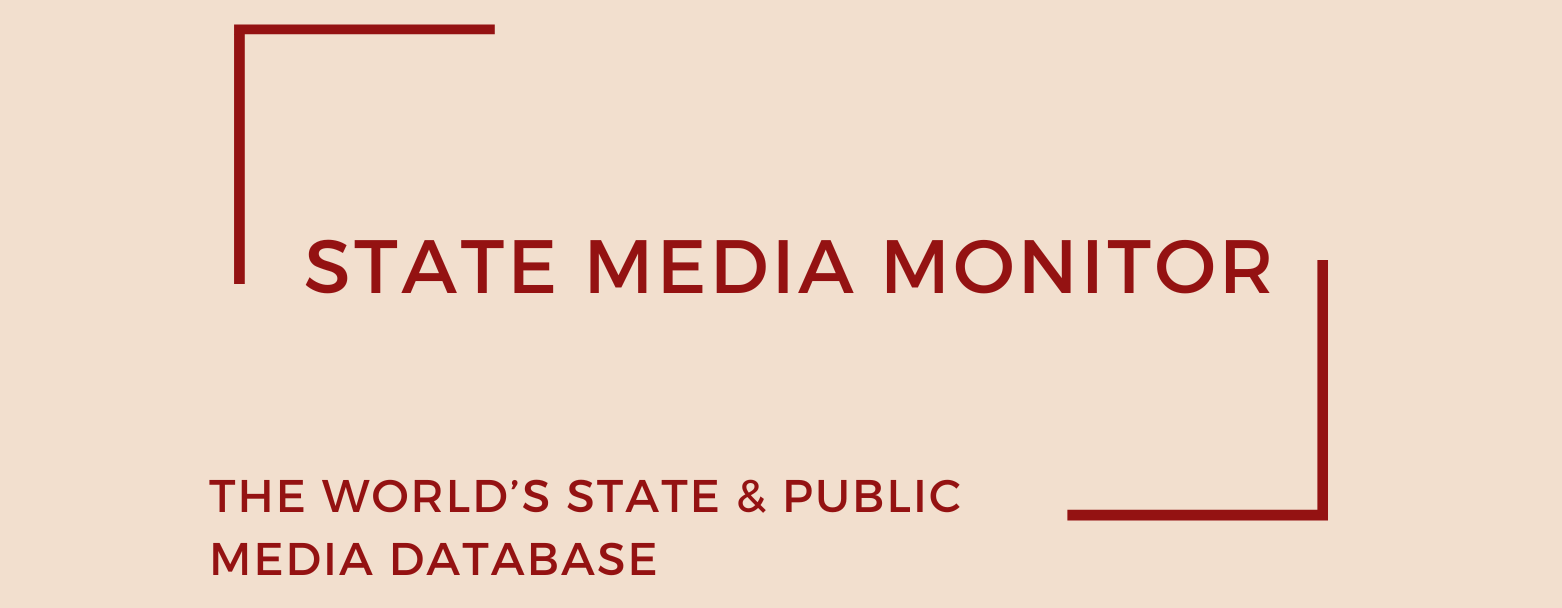Iraqi Media Network (IMN)
The Iraqi Media Network (IMN) stands as the government’s flagship media conglomerate, holding the reins of all state-controlled media outlets in Iraq. Born from the ashes of the Saddam Hussein regime in 2004, IMN has since become the central pillar of Iraq’s official information landscape. Its portfolio is extensive, encompassing television, radio, print publications, a news agency and local broadcasters. IMN’s influence has only grown, with Baghdad once again emerging as a regional media hub, hosting major events like the 4th Arab Media Congress in May 2025 and the Seventh Annual International Conference of “Baghdad Dialogue.”
Media assets
Television: Al-Iraqiya, Al-Iraqiya Sports, Al-Iraqiya News
Radio: Republic of Iraq Radio
Print media: Al-Sabah, IMN Magazine
News agency: Iraqi News Agency
State Media Matrix Typology
Ownership and governance
IMN was established as the legal successor to the Iraqi Radio and Television Corporation, which had operated as the Ba’ath regime’s propaganda machine. The 2015 Law on IMN reshaped the organization, granting it legal personality and placing it under the supervision of Iraq’s Council of Representatives.
Governance Structure:
- Board of Trustees: Composed of nine non-executive members, appointed by parliament from a pool nominated by the Cabinet of Ministers.
- IMN President: Appointed by the Board, with any eligible Iraqi citizen able to apply.
- Political Influence: The Coordination Framework, a coalition dominated by Iran-backed militias, holds a de facto majority on the Board. In February 2024, five new board members were appointed, three of whom are affiliated with groups controlling the Framework.
This structure, while designed to ensure pluralism, has often resulted in political tug-of-war, with the Board’s composition reflecting the prevailing winds of Iraqi politics.
Karim Hammadi is the current President of the Iraqi Media Network (IMN), appointed prior to 2025. A seasoned media figure, Hammadi previously held senior editorial and administrative roles within IMN and affiliated state media. He is known for his loyalty to the ruling political establishment and has overseen IMN’s expansion as a central vehicle of government communication. Under his leadership, IMN has actively supported the government of Prime Minister Mohammed Shia’ al-Sudani, with Hammadi frequently appearing at state-sponsored media events. While Hammadi has advocated for modernization and regional relevance, his tenure has drawn criticism from press freedom advocates for sustaining a tightly controlled editorial environment aligned with Iraq’s dominant political forces.
Source of funding and budget
IMN’s financial lifeblood is drawn from a patchwork of sources: government subsidies (the lion’s share), advertising revenue, sales of broadcast rights, rental fees for broadcast facilities, and printing press operations.
Despite the intention for diversified funding, at least 80% of IMN’s budget is government-derived. The network’s budget was estimated at US$70 million in 2019 and US$75 million in 2024, supporting a workforce of approximately 3,500 staff. However, the network has weathered repeated storms of subsidy cuts, leading to frequent financial crises that threaten its operational stability.
As of mid-2025, Iraq’s broader fiscal landscape is under strain due to oil price volatility and political uncertainty. The government has yet to finalize the 2025 federal budget, raising concerns about continued support for state media and other public sectors.
Editorial independence
IMN’s editorial independence remains more aspiration than reality. Historically, its outlets served as the megaphone for Saddam Hussein’s regime. Post-2003, the pendulum swung to favor U.S. interests, and in recent years, the network has become an unabashed mouthpiece for the Iraqi government and its dominant political factions.
IMN has always been under various forms of control. Operated under a different name until 2003, its media had served as government mouthpieces in the service of the Hussein regime. After 2003, the U.S. Administration began funding the IMN group, which adopted an editorial line clearly supportive of the U.S. government.
The IMN law mandates editorial independence, but in practice, government and political interference are the order of the day. Reporters who publicly criticize the government, even outside their IMN roles, risk losing their jobs. The chilling effect is palpable, with no independent oversight mechanisms in place to safeguard editorial autonomy.
Iraq’s media environment remains fraught with danger. While the country’s ranking in the 2025 World Press Freedom Index has improved slightly, it still languishes near the bottom globally. Journalists face threats, intimidation, and violence, with Baghdad remaining the epicenter of press violations.
July 2025
Citation (cite the article/profile as part of):
Dragomir, M. (2025). State Media Monitor Global Dataset 2025.
Media and Journalism Research Center (MJRC).
Zenodo.
https://doi.org/10.5281/zenodo.17219015
This article/profile is part of the State Media Monitor Global Dataset 2025, a continuously updated dataset published by the Media and Journalism Research Center (MJRC).
